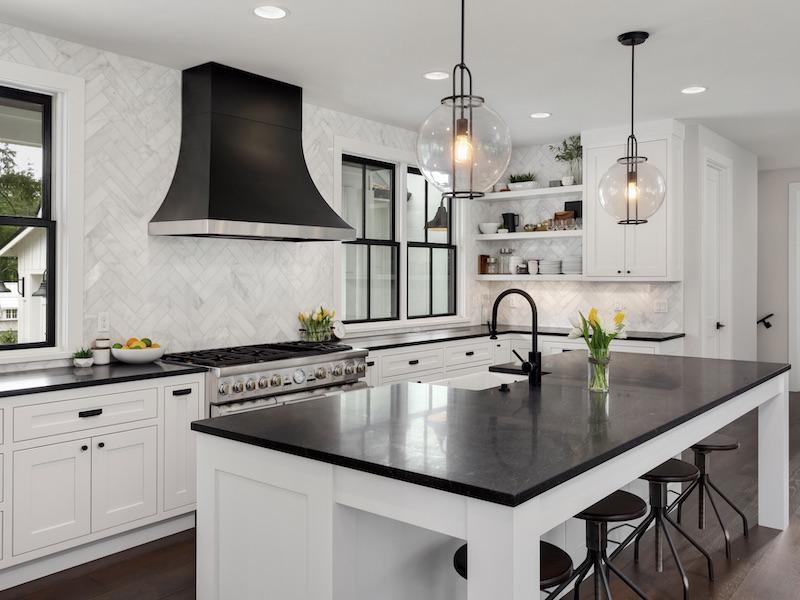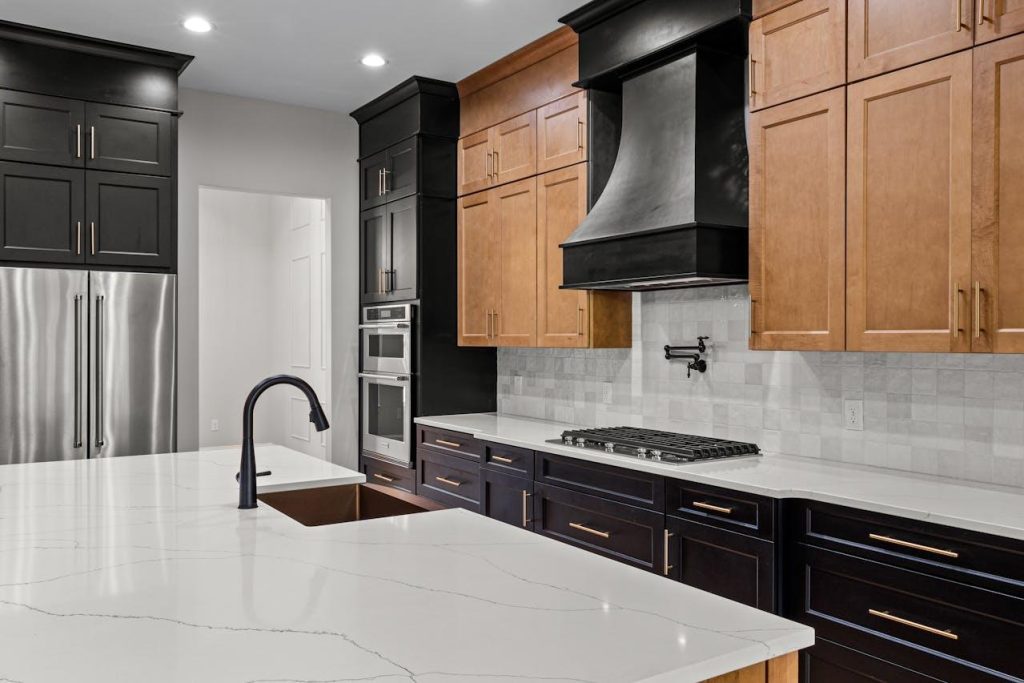In the heart of every home lies the kitchen, a bustling hub where culinary creativity flourishes and memories are made. Among the essential elements that play a pivotal role in this vibrant space are the countertops—functional surfaces that not only support our daily tasks but also significantly influence the overall aesthetic and usability of the kitchen. As the options for countertop materials have expanded, homeowners face the exciting yet daunting challenge of selecting the ideal combination of durability, style, and maintenance. In this article, we will delve into the best materials for functional kitchen countertops, exploring their unique characteristics, advantages, and potential drawbacks. From the timeless elegance of natural stone to the modern appeal of engineered composites, we’ll guide you through the considerations that will help you make an informed decision for your culinary haven. Join us as we navigate the intricate world of kitchen countertops, highlighting the features that can elevate both the practicality and beauty of your kitchen space.
Table of Contents
- Understanding the Essential Properties of Kitchen Countertop Materials
- Comparative Analysis of Popular Countertop Surfaces: Durability and Maintenance
- Aesthetic Choices: How Material Affects the Overall Kitchen Design
- Cost-Benefit Considerations When Selecting Kitchen Countertop Materials
- Final Thoughts
Understanding the Essential Properties of Kitchen Countertop Materials

Choosing the right kitchen countertop material goes beyond aesthetics; it also revolves around several essential properties that determine functionality and longevity. Durability is a primary concern, particularly for surfaces that will endure daily wear and tear, such as scratches, stains, and heat. Materials like granite and quartz are renowned for their resilience, while others, such as laminate, may require more careful handling to prevent damage. Additionally, maintenance is crucial; some materials demand extensive upkeep to retain their appearance, while others are relatively low-maintenance, making them ideal for busy households. For example, marble exudes luxury but requires sealing to protect against etching, whereas stainless steel offers a sleek, modern look with minimal upkeep.
Another factor is cost-effectiveness; finding a balance between budget and quality can significantly influence your decision. Lower-priced materials may suffice for less frequented spaces, whereas investing in high-quality surfaces can enhance a kitchen’s overall value. Eco-friendliness is also gaining traction in today’s market, with more homeowners seeking sustainable options. Countertops made from recycled materials or sustainably sourced wood provide a way to be environmentally conscious. Below is a summarized comparison of some popular kitchen countertop materials based on these essential properties:
| Material | Durability | Maintenance | Cost | Eco-Friendly |
|---|---|---|---|---|
| Granite | High | Moderate | $$$ | Yes |
| Quartz | High | Low | $$$ | No |
| Laminate | Low-Medium | Low | $ | No |
| Marble | Medium | High | $$$$ | Yes |
| Stainless Steel | High | Low | $$$ | No |
| Recycled Glass | Medium-High | Moderate | $$$ | Yes |
Comparative Analysis of Popular Countertop Surfaces: Durability and Maintenance

When it comes to choosing the right countertop surface, understanding the durability and maintenance needs of each material is vital. For instance, granite is renowned for its strength and resistance to scratches and heat, making it a favored choice among homeowners. However, it requires regular sealing to maintain its aesthetic appeal and prevent staining. On the other hand, quartz countertops, which are engineered stone, offer a high level of durability without the same level of maintenance; they are non-porous, which means they are resistant to staining and do not require sealing. This can make quartz an appealing option for those looking for a low-effort surface.
Another popular option is butcher block, which provides a warm, natural look but comes with its own set of care protocols. While it can be sanded down and restored, it is more susceptible to scratches and water damage and requires regular oiling to maintain its finish. For an entirely different take, stainless steel offers unparalleled durability and a sleek modern aesthetic. It resists heat and is easy to clean, but its propensity to show fingerprints can make maintenance a bit of a challenge for some. Below is a quick comparison of these materials regarding their durability and maintenance:
| Material | Durability | Maintenance |
|---|---|---|
| Granite | High | Regular sealing required |
| Quartz | Very High | No sealing needed |
| Butcher Block | Moderate | Regular oiling required |
| Stainless Steel | High | Frequent wiping needed |
Aesthetic Choices: How Material Affects the Overall Kitchen Design
When considering kitchen design, the selection of materials goes beyond mere aesthetics; it shapes the functionality and overall experience of the space. Countertops, as one of the most prominent surfaces in the kitchen, significantly influence both visual appeal and practical use. For instance, a natural stone such as granite or marble not only brings elegance but also provides durability. These materials are resistant to heat and scratching, appealing to those who enjoy cooking and entertaining. On the other hand, quartz offers a similar look but with added non-porous properties, resisting stains and bacteria, making it a practical choice for busy kitchens.
The interplay of materials can also be creatively orchestrated to create a cohesive design. Consider mixing different surfaces to enhance visual interest. For example, pairing a sleek, modern concrete countertop with warm wooden cabinetry can bridge contemporary and rustic styles. Similarly, utilizing laminate or stainless steel can introduce a playful yet industrial edge. Here are some materials to consider:
- Granite: Durable; natural beauty
- Quartz: Low maintenance; versatile
- Marble: Luxurious; heat resistant
- Concrete: Customizable; modern feel
- Laminate: Budget-friendly; available in many colors
- Stainless Steel: Sleek; hygienic and easy to clean
| Material | Durability | Maintenance |
|---|---|---|
| Granite | High | Periodic sealing |
| Quartz | Very High | Wipe clean |
| Marble | Moderate | Regular sealing |
| Concrete | High | Occasional sealing |
| Laminate | Moderate | Simple cleaning |
| Stainless Steel | High | Simple cleaning |
Cost-Benefit Considerations When Selecting Kitchen Countertop Materials
When choosing the right countertop material for your kitchen, a careful evaluation of the costs versus the benefits is essential. Each material comes with its own price point, maintenance requirements, and longevity, impacting its overall value. Granite and quartz, while often more expensive upfront, offer durability and resistance to heat and scratches, making them long-term investment choices. On the other hand, laminate is budget-friendly but may require replacement or repair sooner due to wear and tear, which can increase long-term expenses.
Beyond just the initial purchase price, consider the following factors that contribute to the cost-benefit ratio:
- Maintenance: Some materials require regular sealing or special cleaning products.
- Durability: Evaluate how well the material withstands everyday use.
- Resale Value: Higher-end materials may enhance the overall value of your home.
- Appearance: Consider aesthetic appeal relative to cost, as some cheaper materials may not match the desired kitchen style.
| Material | Average Cost per Sq Ft | Durability | Maintenance Level |
|---|---|---|---|
| Granite | $40 – $100 | High | Medium |
| Quartz | $50 – $150 | High | Low |
| Laminate | $20 – $50 | Medium | Medium |
| Marble | $50 – $150 | Medium | High |
Final Thoughts
the journey through the diverse world of functional kitchen countertop materials unveils a treasure trove of options tailored to meet the unique demands of modern culinary spaces. From the enduring resilience of granite and quartz to the sleek sophistication of stainless steel and the warmth of butcher block, each material offers its blend of practicality and aesthetic appeal. The right countertop not only enhances the functionality of the kitchen but also serves as a pivotal design element that reflects your personal style and lifestyle needs. As you embark on your kitchen renovation or remodeling project, consider the crucial factors of durability, maintenance, and overall visual impact when selecting the ideal surface. With thoughtful consideration and an informed approach, you can create a kitchen countertop that stands the test of time, transforming your culinary experiences into something truly extraordinary. Ultimately, the choice of material will shape not just the workspace, but the heart of your home—where meals are made, memories are forged, and every moment in the kitchen becomes a cherished experience.



